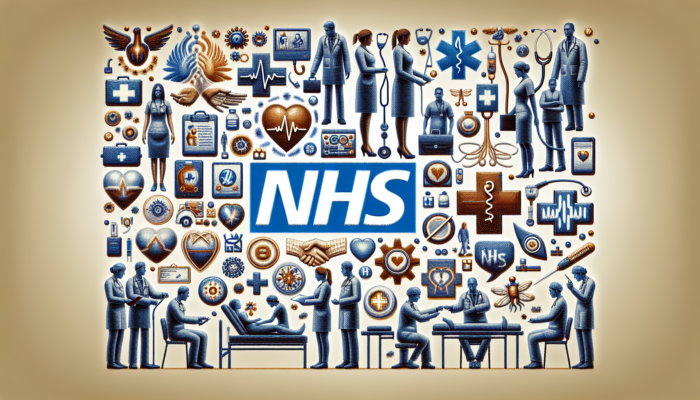CRM Implementation for Success in Healthcare Settings
In the contemporary landscape of the healthcare industry, the effective management of customer relationships is crucial for the success and sustainability of any healthcare organization. Customer Relationship Management (CRM) systems have emerged as essential solutions that streamline and enhance interactions with patients, optimize internal processes, and ultimately improve the quality of healthcare services provided. However, the successful implementation of a CRM solution in the healthcare sector necessitates meticulous planning and execution to achieve favorable outcomes. This article delves into the critical steps and considerations necessary for effectively implementing CRM systems within the healthcare environment.
Unlocking the Advantages of CRM Implementation in Healthcare
Before embarking on the implementation journey, it is vital to recognize the myriad benefits that a CRM system can offer to the healthcare industry. By adeptly managing patient relationships, a CRM solution can deliver the following significant advantages:
- Elevated Patient Experience: A well-implemented CRM system fosters personalized interactions with patients, leading to enhanced patient satisfaction levels. With access to comprehensive patient records, healthcare providers can offer tailored services, anticipate patient needs more effectively, and ensure a seamless experience throughout the entire care journey.
- Personalized interactions: CRM systems empower healthcare providers to gather and securely store detailed patient information, including medical history, preferences, and communication styles. This capability allows healthcare professionals to deliver personalized care and create customized treatment plans that resonate with each patient’s unique needs.
- Anticipating patient needs: By utilizing a CRM system, healthcare providers can proactively identify and address patient needs based on historical data. For instance, if a patient is living with a chronic condition, the CRM can remind healthcare professionals to schedule routine check-ups and preventive measures, ensuring that patients receive timely care.
- Seamless care journey: CRM systems facilitate smooth transitions between various healthcare providers and departments. With comprehensive access to patient records, healthcare professionals can ensure that all pertinent information is shared, thus maintaining continuity of care and enhancing the overall patient experience.
- Enhanced Communication and Coordination: CRM systems promote efficient communication and collaboration among healthcare professionals, departments, and even external stakeholders. This enhancement leads to improved care coordination, reduced communication gaps, and the timely sharing of crucial information.
- Efficient communication: CRM systems provide a centralized platform for healthcare professionals to communicate and exchange information securely. This functionality eliminates the need for time-consuming and error-prone manual processes, such as phone calls or paper-based communication, allowing for more efficient operations.
- Seamless collaboration: With a CRM system, healthcare professionals can easily collaborate on patient care, share updates, and coordinate treatment plans. This collaborative approach improves the overall efficiency and effectiveness of care delivery, ensuring that patients receive comprehensive services.
- Timely information sharing: CRM systems facilitate real-time access to patient information, ensuring that all healthcare professionals involved in a patient’s care are equipped with the most up-to-date data. This capability minimizes the risk of errors and delays in decision-making processes.
- Streamlined Administrative Processes: The automation functionalities of CRM systems streamline various administrative tasks, including appointment scheduling, billing, and documentation management. This optimization allows healthcare providers to concentrate more on patient care by alleviating administrative burdens and enhancing operational efficiency.
- Appointment scheduling: CRM systems can automate the appointment scheduling process, allowing patients to book appointments online, which reduces the reliance on manual scheduling. This convenience not only enhances the patient experience but also saves administrative time and effort.
- Billing automation: CRM systems can seamlessly integrate with billing systems, automating the generation and distribution of invoices. This integration minimizes errors and delays in the billing process, ultimately improving revenue cycle management.
- Documentation management: CRM systems create a centralized repository for storing and managing vital patient documentation, such as medical records and consent forms. This centralization improves accessibility and significantly reduces the risk of lost or misplaced documents.
- Effective Marketing and Outreach: CRM systems empower healthcare organizations to execute targeted marketing campaigns and outreach initiatives. By leveraging patient data, organizations can identify specific segments, personalize their communication strategies, and engage with patients using the most suitable channels. This approach results in higher response rates and increased patient acquisition levels.
- Targeted marketing campaigns: CRM systems enable healthcare organizations to segment their patient population based on various criteria, including demographics, medical conditions, or past engagement history. This capability allows for the execution of targeted marketing campaigns that resonate with specific patient groups, thus increasing the likelihood of response and conversion.
- Personalized communication: By utilizing patient data, CRM systems facilitate personalized communication through various channels such as email, SMS, or patient portals. This personalized approach enhances patient engagement and fosters loyalty.
- Tracking and analytics: CRM systems provide insights and analytics regarding the effectiveness of marketing campaigns, empowering healthcare organizations to refine their strategies and improve overall return on investment (ROI).
Essential Steps for Successful CRM Implementation in Healthcare

1. Clearly Define Your Objectives and Requirements
A successful CRM implementation initiative begins with a thorough understanding of your organization’s specific objectives and requirements. Identify the pain points you aim to address through the CRM system and delineate the outcomes you expect to achieve. Consider the unique demands of the healthcare industry, such as compliance regulations and data security, and ensure that your CRM solution aligns with these critical requirements.
- Identify pain points: Conduct a comprehensive assessment of your organization’s existing processes to identify areas that can be enhanced through CRM implementation. This assessment may reveal challenges related to patient communication, care coordination, or administrative inefficiencies.
- Define outcomes: Clearly articulate the outcomes that you anticipate from implementing a CRM system. These outcomes could include heightened patient satisfaction, increased operational efficiency, or enhanced marketing effectiveness.
- Compliance and data security: Pay careful attention to compliance regulations and data security requirements that are specific to the healthcare sector. Ensure that your chosen CRM solution adheres to industry standards, such as HIPAA compliance, to safeguard patient data.
2. Select the Most Suitable CRM System
Choosing the right CRM system tailored specifically for your healthcare organization is a critical decision. Evaluate various options based on essential factors such as functionality, scalability, user-friendliness, integration capabilities, and the vendor’s reputation. Seek CRM solutions that incorporate healthcare-specific features, including patient data integration, appointment management, and compliance with HIPAA regulations.
- Functionality: Assess the specific features and functionalities that are vital for your healthcare organization. This could encompass patient data integration, appointment scheduling, referral management, or advanced analytics capabilities.
- Scalability: Opt for a CRM system that can accommodate your organization’s future growth and expansion. Ensure that it is capable of managing increasing volumes of patient data and supporting additional users or departments as needed.
- Integration capabilities: Evaluate the CRM system’s capacity to integrate seamlessly with other existing systems, such as electronic health records (EHR) or billing systems. Smooth integration is essential for ensuring consistent data flow and eliminating manual data entry errors.
- Vendor reputation: Conduct thorough research on the reputation and performance history of CRM vendors within the healthcare sector. Look for customer reviews, case studies, and references to gauge their credibility and level of customer satisfaction.
3. Develop a Comprehensive Plan for Data Integration and Migration

Effective data integration and migration are pivotal considerations for CRM implementation. Assess your current data sources and determine how they will be integrated into the CRM system. Ensure that the CRM solution can manage various data types, including patient demographics, medical history, and appointment records. Formulate a detailed data migration plan designed to minimize disruptions and maintain data accuracy and integrity throughout the process.
- Data assessment: Conduct a thorough examination of your existing data sources, which may include electronic health records, spreadsheets, or other databases. Identify the specific data that needs to be migrated to the CRM system for effective operation.
- Data mapping: Clearly define how the data from diverse sources will be mapped and transformed to fit the CRM system’s data structure. Maintain the necessary data fields and relationships during the migration process to ensure consistency and accuracy.
- Data cleansing: Prior to migration, thoroughly clean and validate the data to ensure its accuracy and integrity. This process may involve eliminating duplicate records, correcting errors, or standardizing data formats to facilitate smooth integration.
- Testing and validation: Conduct extensive testing to confirm that the migrated data appears correctly and is functional within the CRM system. Validate data accuracy and integrity by comparing the migrated data against the original source to ensure reliability.
4. Tailor and Configure the CRM System to Your Needs
Customizing the CRM system to align with your organization’s specific needs and workflows is essential. Adjust the user interface, data fields, and reporting capabilities to ensure they reflect your operational processes accurately. Define roles and permissions for different user groups to uphold data security and compliance standards. Additionally, provide training for your staff on how to utilize the CRM system effectively, leveraging its features to enhance patient care.
- User interface customization: Personalize the CRM system’s user interface to correspond with your organization’s branding and visual identity. This enhances user adoption and familiarity, making the system more intuitive for staff.
- Data fields and workflows: Modify the data fields and workflows within the CRM system to align with your organization’s specific processes. This ensures that the system captures necessary information and supports your operational workflows effectively.
- Reporting and analytics: Configure the reporting capabilities of the CRM system to generate insightful analytics. This allows you to track key performance indicators (KPIs) and make informed, data-driven decisions.
- User training: Develop comprehensive training programs to ensure that your staff is well-equipped to effectively use the CRM system. Provide hands-on training opportunities, user manuals, and ongoing support to address any questions or concerns that may arise.
5. Conduct Thorough Testing and Validation of the CRM System
Comprehensive testing is vital to ensure that the CRM system operates as intended. Engage in detailed user acceptance testing to identify and rectify any issues or gaps in functionality before full implementation. Validate the system’s performance across various scenarios to confirm it meets the required performance standards. Involve key stakeholders and end-users throughout the testing process to gather valuable feedback and make necessary adjustments.
- User acceptance testing: Involve end-users, including healthcare professionals and administrative staff, in the user acceptance testing process. Encourage them to perform typical tasks and workflows within the CRM system and solicit their feedback on usability and functionality.
- Performance testing: Evaluate the CRM system’s performance under various scenarios, such as high user loads or simultaneous data entry activities. Confirm that it meets necessary performance standards, including acceptable response times and system availability.
- Issue resolution: Promptly address any issues or gaps identified during testing. Work closely with the CRM vendor or your internal IT team to resolve technical problems and ensure a smooth user experience upon rollout.
- Iterative testing: Engage in iterative testing and validation to ensure the CRM system maintains optimal performance following any changes or updates. This ongoing testing process helps identify new issues or performance degradation as they arise.
6. Provide Comprehensive Training and Support for Your Staff

Effective training and continuous support are critical components of successful CRM implementation. Develop robust training programs tailored to ensure that your staff understands how to utilize the CRM system effectively. Offer ongoing support and promptly address any questions or concerns that may arise during the transition period. Regularly assess system usage and address any challenges related to user adoption quickly.
- Training programs: Create training programs designed for different user groups, including healthcare professionals, administrative personnel, or marketing teams. Provide hands-on training, user manuals, and online resources to facilitate learning and adoption.
- Ongoing support: Establish a dedicated support system to respond to any questions, issues, or concerns that may emerge during CRM system implementation. This could involve a dedicated support team, helpdesk services, or online support resources to assist users.
- User adoption evaluation: Regularly assess system usage and user adoption rates. Identify any challenges or barriers to adoption and take prompt action to address them. This may involve organizing additional training sessions, collecting user feedback, or implementing system enhancements.
7. Monitor System Performance and Continuously Improve
After the CRM system is fully implemented, monitoring its performance and gathering user feedback is essential for ongoing success. Establish key performance indicators (KPIs) that align with your organizational objectives, tracking metrics such as patient satisfaction, operational efficiency, and marketing effectiveness. Regularly assess the system’s impact and identify areas for enhancement. Engage with end-users frequently to collect feedback on system usability and pinpoint any necessary improvements or updates.
- Key performance indicators (KPIs): Define KPIs that correspond with your organization’s goals, including metrics like patient satisfaction scores, appointment wait times, or revenue growth. Continuously monitor these KPIs to evaluate the CRM system’s impact on your organization’s overall performance.
- Feedback collection: Regularly engage with end-users, including healthcare professionals, administrative staff, and even patients, to gather feedback on the system’s usability and effectiveness. This engagement can be conducted through surveys, focus groups, or user feedback sessions.
- Continuous improvement: Based on the feedback received and performance monitoring results, identify opportunities for improvement and prioritize necessary enhancements or updates. Collaborate with the CRM vendor or your internal IT team to implement these improvements and ensure the CRM system continues to meet your organization’s evolving needs.
Achieving Success Through Strategic CRM Implementation in Healthcare
The implementation of a CRM system in the healthcare sector has the potential to dramatically enhance patient experience, streamline operational processes, and foster improved communication among healthcare professionals. By adhering to the key steps discussed in this article, you can position your CRM implementation for success. It is crucial to define your objectives clearly, select the appropriate CRM system, plan for data integration, customize and configure the system effectively, test and validate its functionality, train and support your staff adequately, and continuously monitor and improve the system. With a well-executed CRM implementation, your healthcare organization can thrive in today’s competitive landscape while delivering exceptional patient care.
Frequently Asked Questions (FAQ)
1. What are the key benefits of implementing CRM in the healthcare industry?
- Enhanced patient experience via personalized interactions, anticipating patient needs, and providing a seamless care journey.
- Improved communication and coordination among healthcare professionals and departments, fostering better collaboration.
- Streamlined administrative processes, encompassing appointment scheduling, billing automation, and documentation management.
- Effective marketing and outreach through targeted campaigns, personalized communication efforts, and robust tracking and analytics.
2. What are the essential steps for successful CRM implementation in healthcare?
- Clearly define your objectives and requirements, taking into account the unique needs of the healthcare sector.
- Select the most suitable CRM system based on functionality, scalability, integration capabilities, and vendor reputation.
- Plan for effective data integration and migration, ensuring the accuracy and integrity of data.
- Customize and configure the CRM system to align with your organization’s specific workflows and requirements.
- Conduct thorough testing and validation of the CRM system to confirm its functionality and performance.
- Provide comprehensive training and ongoing support to your staff to ensure effective utilization of the CRM system.
- Continuously monitor and improve the CRM system based on feedback and performance evaluations.
3. How does CRM implementation enhance patient experience in healthcare?
CRM implementation fosters personalized interactions, anticipates patient needs, and ensures a seamless care journey. Healthcare providers can gather and maintain detailed patient information, proactively address patient needs, and facilitate smooth transitions between different healthcare providers and departments, ultimately enhancing the patient experience.
4. In what ways can CRM implementation streamline administrative processes in healthcare?
CRM systems automate various administrative tasks, including appointment scheduling, billing, and documentation management. This automation allows healthcare providers to allocate more time to patient care, reducing administrative burdens and enhancing operational efficiency. CRM systems can streamline appointment bookings, integrate with billing systems, and provide a centralized repository for effective management of patient documentation.
Originally posted 2023-03-15 01:34:32.





